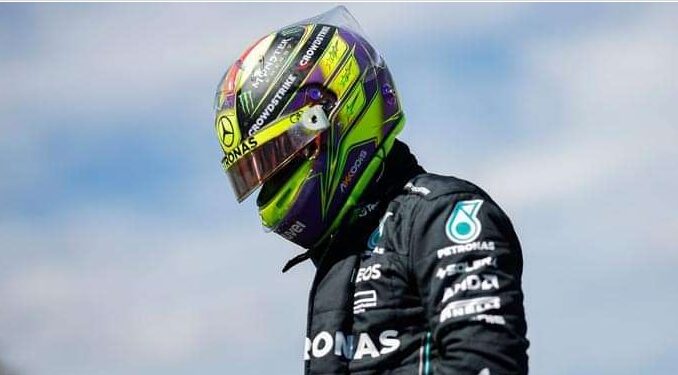
Lewis Hamilton and Charles Leclerc were disqualified from the United States Grand Prix hours after the race ended, because their cars did not comply F1 regulations
Once again the result of a Formula 1 race has changed just hours after the checkered flag was raised.
This time it was a dramatic double elimination. Lewis Hamilton and Charles Leclerc finished second and sixth respectively at the United States Grand Prix, but were stripped of those positions after their cars failed post-race inspection.
Why? Because the rear skid plate – part of which was found under an F1 car – turned out to be too worn. So they were thinner than the regulations allowed, meaning the cars were violating the sport’s extremely detailed technical rules.
Once this is established, there will probably only be one outcome. And the stewards had no choice but to disqualify both cars from the race.
This is certainly not the first time something like this has happened. Michael Schumacher was disqualified from the 1994 Belgian Grand Prix for illegal oversteer, allowing Damon Hill to win that day’s race.
And Mercedes boss Toto Wolff quickly raised his hand. “Others understood where we went wrong and that there was no room for maneuver in the rules,” said the Austrian. We have to lead, learn and come back stronger next weekend.”
The pads were worn during the Sprint race weekend on a particularly bumpy track. Several drivers complained about it after the race, including winner Max Verstappen, who said that while he liked the layout of the COTA track, it was “not F1 level”.
No one can reasonably argue that Hamilton and Leclerc should not have been eliminated. As Wolff and F1’s stewards have said, it is the responsibility of the teams to ensure their cars comply with the regulations at all times, even in cases of excessive wear and tear.
But the process has raised concerns about the fairness of the post-race technical inspection process. Many cars were inspected in various ways after the Grand Prix, as is normal procedure. But FIA documents show that “physical ground and board wear checks” were carried out on only four of them.
This is not unusual. Controls are in place to prevent teams from attempting to break the rules. The cars were chosen at random and in this case the four cars tested for floor and board turned out to be the top three and pole holders.
This means that in addition to Hamilton and Leclerc, race winners Verstappen and Lando Norris, who finished third but inherited second place after being disqualified, also tested the floor of their cars. But they passed the test and were therefore not disqualified.
So four cars had their floors and planks checked. That means there were 13 more cars which all finished the race but which did not go through the same inspection. And, given the 50 percent fail rate among the admittedly small sample size of four, that is a concern.
It is not unreasonable to assume that, given two of the four cars inspected in this way failed the test, there is a high chance that there were more cars out on track at COTA on Sunday which were also not compliant with the regulations, but no-one spotted it.
And that raises questions over the sporting integrity of the result. You could not blame Hamilton and Leclerc for feeling aggrieved that they were disqualified while others who may have flouted the same rule got away with it because nobody looked. The Ferrari driver seems to feel that way, given a tweet pointing out that unfairness was liked by his account.
Verstappen and his Red Bull team may have won the titles already, but there is still plenty to play for in the final weeks of this season. Hamilton is breathing down the neck of Sergio Perez in the drivers’ standings and would have narrowed the gap further if his result stood, but his disqualification allowed the Mexican to give himself some breathing space.
But, for all we know, Perez might also have had excessive wear on the rear skids of his Red Bull. We cannot assume that there was, of course, but the problem is that we also cannot be certain that there wasn’t. If Perez beats Hamilton to second place by a narrow margin by the end of the year, it may be down to the fact that no-one inspected the floor of his car after the Texas race.
Wolff said his Mercedes team will learn from its mistakes and change the way it works to make sure its cars remain compliant with the rules. Perhaps the FIA should also tweak its scrutineering process to make sure everyone’s machines are looked at in the same way.

Leave a Reply